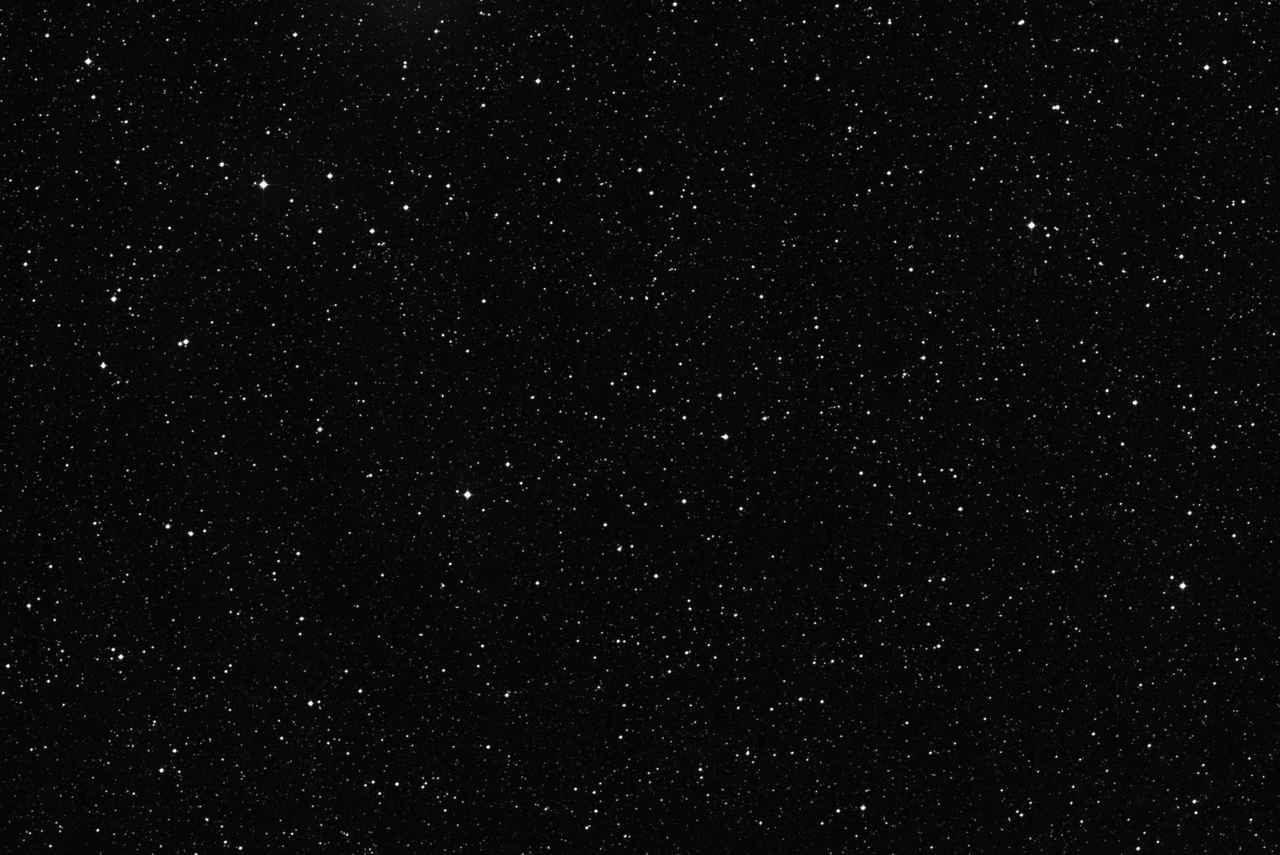Comet 96P/Machholz
Comet 96P/Machholz is in the constellation of Corona Australis, at a distance of
Finder Charts
The sky charts below show, at different resolutions, the position of comet 96P/Machholz in the sky. Click on each chart to access the interactive star map tool.
The following map uses photographic imagery from the Digitized Sky Survey (DSS) to realistically visualize the precise position of comet 96P/Machholz against the stars in the background. The horizontal size of the map measures 60 arcminutes. Click on the image to access a more detailed full-screen view.


Equatorial Coordinates
Apparent
J2000
Additional Information
The observed values of Magnitude, Coma Diameter and Tail Length are derived from the most recent observation recorded at the Comet Observers Database. The value of Predicted Magnitude comes from the JPL Horizons ephemerides service and, in the case of comets, might be inaccurate given the highly dynamic and unpredictable behavior of these objects. When available, please refer to the Observed Magnitude value and consider the Predicted Magnitude as a directional indication. We acknowledge with thanks the comet observations from the COBS Comet Observation Database contributed by observers worldwide and used in this table to report recent comet observations.
Rise and Set Times
The following table lists today's rise, transit and set times of comet 96P/Machholz from Sankt Florian, Austria (all times relative to the local timezone Europe/Vienna):
If you need to access this information frequently for your observations, you can create a simple customized Quick Access page, so that you can easily bookmark it in your browser favorites or add a shortcut to your mobile phones' home screen.
Distance from Earth
The distance of comet 96P/Machholz from Earth is currently
The following graph shows the distance of comet 96P/Machholz from Earth as a function of time. In the chart the distance is measured in Astronomical Units and the data is sampled with an interval of 1 day.
Note: The values in this chart may not be entirely accurate around the time of closest approach for objects passing very close to Earth at high speed (e.g., Near-Earth Objects).
The value of the distance of 96P/Machholz from Earth is also available as a real time updated value in the live position tracker.
Closest Approach to Earth
In the period between January 1, 2013 and December 30, 2100, the closest approach of comet 96P/Machholz to Earth will happen on Friday 16 June 2028 at a distance of 0.319896 Astronomical Units, or 47,855,756 kilometers:
Note: the values for the closest approach are computed with a sampling interval of 1 day.
Light Curve
The following chart shows the light curve of comet 96P/Machholz, i.e., its apparent magnitude as a function of time. The curve is calculated using the latest ephemerides provided by JPL Horizons. The magnitude data is sampled with the interval of 2 days. Because of this sampling, inaccuracies may occur for objects that have large variations of brightness over a few days. For comets, large discrepancies can arise between the calculated brightness and the observations due to their highly dynamic, and not always precisely predictable, behavior.
Orbital Elements
The following table lists the orbital elements of comet 96P/Machholz at epoch February, 16 2009 00:00 UTC (JD: 2454879.5). Source: JPL Small-Body Database
| Element | Symbol | Value |
|---|---|---|
| Orbit eccentricity | e | 0.95913614 |
| Orbit inclination | i | 58.33965101° |
| Perihelion distance | q | 0.12391231 AU 18,537,017 km |
| Aphelion distance | Q |
5.94072730 AU 888,720,156 km |
| Semi-major axis | a |
3.03231980 AU 453,628,586 km |
| Orbital period | period |
5.2804 years 1,928.6833 days |
| Date of perihelion transit | Tp | April 5, 2007 2,454,195.9368 JD |
| Next perihelion transit | July 16, 2012 2,456,124.6201 JD |
|
| Argument of perihelion | peri | 14.766151892952° |
| Longitude of the ascending node | node | 94.310553881627° |
| Mean anomaly | M | 127.59106252743° |
| Mean motion | n | 0.18665584°/day |
Orbit Visualization
The following chart is a 3D animated visualization of the orbit of comet 96P/Machholz relative to the other major objects in the Solar System. You can access more advanced features using our 3D Solar System Viewer.
15 Days Ephemeris
The following table lists the ephemerides of comet 96P/Machholz computed for the past and next 7 days, with a 24 hours interval. Apparent celestial coordinates are provided.
| Date | Right AscensionR.A. | DeclinationDec. | MagnitudeMag | Constellation |
|---|---|---|---|---|
| Jul 09 2025 | 18h 51m 56s | -36° 53’ 24” | 24.11 | Corona Australis |
| Jul 10 2025 | 18h 51m 01s | -36° 54’ 51” | 24.11 | Corona Australis |
| Jul 11 2025 | 18h 50m 06s | -36° 56’ 14” | 24.11 | Corona Australis |
| Jul 12 2025 | 18h 49m 11s | -36° 57’ 33” | 24.11 | Corona Australis |
| Jul 13 2025 | 18h 48m 16s | -36° 58’ 46” | 24.11 | Corona Australis |
| Jul 14 2025 | 18h 47m 21s | -36° 59’ 55” | 24.12 | Corona Australis |
| Jul 15 2025 | 18h 46m 27s | -37° 01’ 00” | 24.12 | Corona Australis |
| Jul 16 2025 | 18h 45m 33s | -37° 02’ 00” | 24.12 | Corona Australis |
| Jul 17 2025 | 18h 44m 39s | -37° 02’ 55” | 24.12 | Corona Australis |
| Jul 18 2025 | 18h 43m 45s | -37° 03’ 45” | 24.13 | Corona Australis |
| Jul 19 2025 | 18h 42m 52s | -37° 04’ 31” | 24.13 | Corona Australis |
| Jul 20 2025 | 18h 41m 59s | -37° 05’ 13” | 24.13 | Corona Australis |
| Jul 21 2025 | 18h 41m 07s | -37° 05’ 50” | 24.14 | Corona Australis |
| Jul 22 2025 | 18h 40m 15s | -37° 06’ 22” | 24.14 | Corona Australis |
Additional Resources on TheSkyLive
- Comet 96P/Machholz: Complete reference information on TheSkyLive.com.
- Where is comet 96P/Machholz?: Key information on where to find comet 96P/Machholz in the sky.
- Distance of comet 96P/Machholz from Earth: Find out how far comet 96P/Machholz is from Earth right now.
- How Bright is comet 96P/Machholz?: Current visual brightness (magnitude) and apparent size.
- Rise and Set Times: Rise and set times of comet 96P/Machholz from your location.
- Interactive Sky Map: Planetarium-style interactive visualization of comet 96P/Machholz's position in the sky.
- Live Position Tracker: High precision real time tracker of comet 96P/Machholz's position using deep space imagery.
- Ephemeris: 15 days comet 96P/Machholz's computed ephemeris.
- Orbital elements: Information about comet 96P/Machholz orbital parameters.
- Orbit Visualization: 3D interactive visualization showing the orbit of comet 96P/Machholz with respect to the major Solar System objects.











